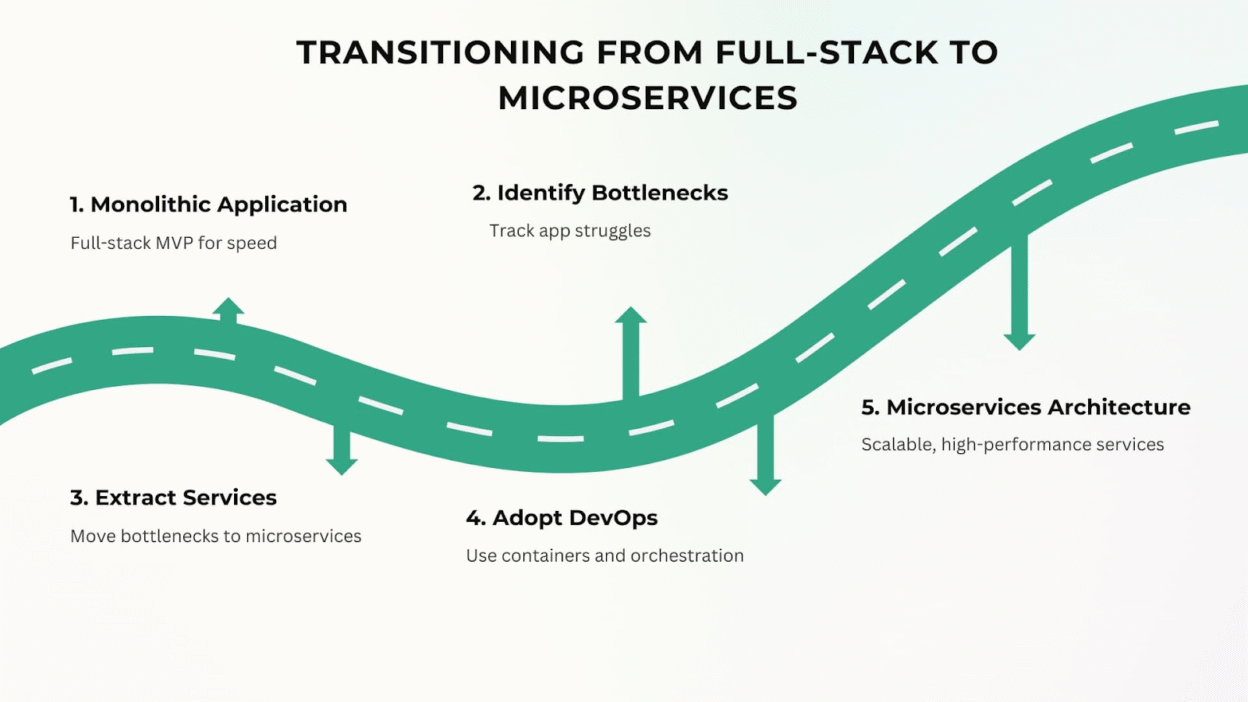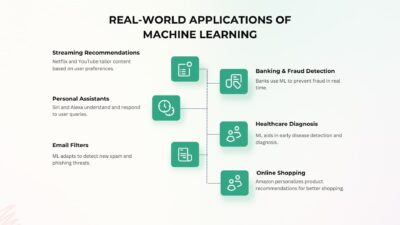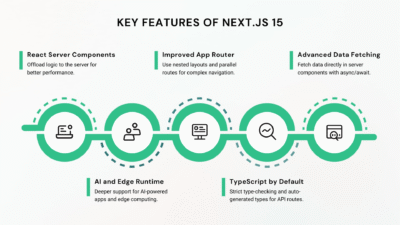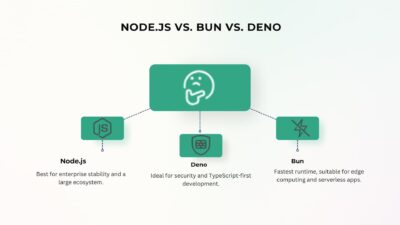When businesses start small, technology choices are usually straightforward—get a website up, build a mobile app, and deliver value quickly. But as companies grow, the tech stack that worked perfectly in the early days often begins to feel like a bottleneck. This is where many companies face the classic decision: stick with a full-stack architecture or transition to microservices?
Both approaches have their strengths and weaknesses, and choosing the right one can significantly impact how smoothly your business scales.
In this article, we’ll break down the differences, explore real-world use cases, and help you figure out which architecture makes sense for your growth journey.
Understanding the Basics
Before we dive into scalability, let’s clarify what we mean by full-stack and microservices.
What is Full-Stack Development?
Full-stack development refers to building both the frontend (what users see) and the backend (the server, database, and application logic) within a single application.
A full-stack app typically looks like this:
- Frontend: Built with frameworks like React, Angular, or Vue.
Backend: Powered by Node.js, Python (Django/Flask), Ruby on Rails, Java (Spring Boot), or .NET. - Database: A single relational (MySQL, PostgreSQL) or NoSQL (MongoDB) database.
It’s often deployed as a monolith, meaning all components—UI, server logic, and database interactions—are bundled into one deployable unit.
Why it’s popular: Full-stack development is fast to build, cost-efficient, and easier to manage in the early stages. Startups love it because it enables small teams to deliver complete products without complex infrastructure.
What are Microservices?
Microservices, on the other hand, take the opposite approach. Instead of one big application, functionality is broken down into independent services, each responsible for a specific task.
For example:
- User Service: Handles login, signup, and authentication.
- Product Service: Manages product listings and inventory.
- Payment Service: Handles transactions.
- Analytics Service: Tracks usage and generates insights.
Each microservice runs independently, communicates via APIs (often REST or gRPC), and can even use different languages or databases.
Why it’s popular: Microservices offer flexibility, scalability, and fault tolerance. Big tech companies like Netflix, Amazon, and Uber rely on microservices to handle millions of users and requests without collapsing under pressure.
Full-Stack vs. Microservices: Key Differences
Let’s put the two side by side to see how they compare.
| Aspects | Full-Stack (Monolith) | Microservices |
| Architecture | Single unified app | Distributed independent services |
| Scalability | Vertical scaling (add more power to the server) | Horizontal scaling (add more services/instances) |
| Development Speed | Faster for small apps | Slower upfront due to complexity |
| Cost | Cheaper initially | Higher setup & maintenance costs |
| Team Size | Works well with small teams | Suits larger, specialized teams |
| Deployment | Deploy everything together | Deploy services independently |
| Failure Impact | One bug can crash the whole system | Failures are isolated to one service |
| Flexibility | Limited to the chosen stack | Each service can use different tech |
| Use Case | Startups, MVPs, small apps | Large-scale apps, enterprise, global products |
The Scaling Factor: Which One Wins?
Now, let’s focus on the heart of the question—scaling a business. When your user base grows from thousands to millions, how do these two architectures hold up?
Scaling with Full-Stack
Full-stack applications are typically scaled vertically. This means you add more CPU, RAM, or SSD to your existing server to handle more load. It’s simple and works well—until it doesn’t.
Pros of full-stack scaling:
- Simple scaling strategy (upgrade your server).
- Easier to manage with fewer moving parts.
- Great for apps with moderate traffic.
Cons:
- There’s a ceiling—hardware upgrades eventually max out.
- A single failure (like a database crash) can bring the entire app down.
- Feature releases slow down as the codebase grows.
Scaling with Microservices
Microservices scale horizontally. Instead of one giant application, you add more instances of individual services. If your product service is overloaded, just spin up more product-service containers—without touching the rest of the system.
Pros of microservices scaling:
- Near-infinite scalability (just add more instances).
- Failures don’t affect the whole system.
- Faster, independent deployments.
- Easier to adopt new technologies over time.
Cons:
- Complex setup with orchestration (Docker, Kubernetes).
- Higher DevOps costs and infrastructure management.
- Requires strong monitoring and communication systems.
When Full-Stack Makes Sense
Full-stack is often the right choice when:
- You’re building an MVP (Minimum Viable Product).
- Your app has limited features and a small user base.
- You’re working with a small team or a tight budget.
- Time-to-market is more important than long-term scalability.
Examples:
- A local e-commerce store with a few hundred products.
- An internal tool for a company’s HR team.
- A SaaS product is in its early testing stage.
When Microservices Make Sense
Microservices shine when:
- You expect rapid growth and millions of users.
- Your product involves complex features across domains.
- You want independent deployment cycles for different teams.
- You need fault tolerance to avoid downtime.
Examples:
- Netflix streams billions of hours of video.
- Amazon is running separate services for cart, checkout, and recommendations.
- Uber manages ride requests, driver tracking, payments, and maps independently.
Transitioning from Full-Stack to Microservices

Most businesses don’t start with microservices—they migrate gradually. Here’s a practical roadmap:
- Start Monolithic: Launch your MVP using full-stack for speed and cost efficiency.
- Identify Bottlenecks: Track where your app struggles (e.g., payments, search, or analytics).
- Extract Services Gradually: Move those bottlenecks into microservices while keeping the rest in monolith.
- Adopt DevOps Tools: Use containers (Docker) and orchestration (Kubernetes) for service management.
- Scale as Needed: Expand microservices only in areas that require high performance.
Real-World Case Studies
- Netflix: Originally a monolith, Netflix moved to microservices to handle global video streaming. Each service (recommendations, playback, billing) is independent.
- Airbnb: Started as a simple full-stack app built on Ruby on Rails. As demand grew, they gradually transitioned to microservices for better performance.
- Slack: Still operates largely as a monolith, proving that for some companies, full-stack can scale impressively if managed well.
Cost Considerations
- Full-Stack: Lower upfront costs. A few developers can manage everything. Hosting costs are minimal.
- Microservices: Higher infrastructure and DevOps expenses. Requires larger teams with specialized roles.
Final Thoughts
So, full-stack vs. microservices—which is best for scaling businesses?
- If you’re a startup or small business building an MVP, full-stack is the smart choice. It’s affordable, faster to deploy, and easier to maintain with a lean team.
- If you’re a scaling enterprise handling thousands of concurrent users, transactions, and features, microservices provide the flexibility and fault tolerance you need.




